Related Research Articles
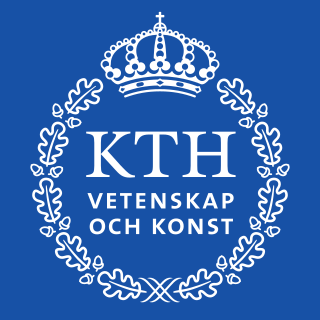
The KTH Royal Institute of Technology, abbreviated KTH, is a public research university in Stockholm, Sweden. KTH conducts research and education in engineering and technology and is Sweden's largest technical university. Currently, KTH consists of five schools with four campuses in and around Stockholm.

Gustav Ludwig Hertz was a German experimental physicist and Nobel Prize winner for his work on inelastic electron collisions in gases, and a nephew of Heinrich Hertz.
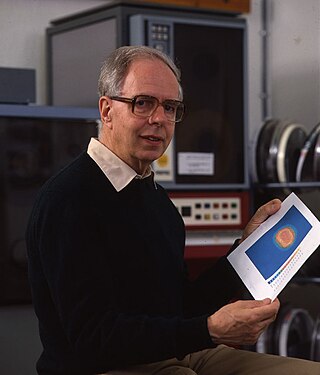
Carl Hellmuth Hertz was a German physicist known primarily for being involved in the development of inkjet technology and ultrasound technology. He was the son of Gustav Ludwig Hertz and great nephew of Heinrich Hertz.

Kai Manne Börje Siegbahn was a Swedish physicist who shared the 1981 Nobel Prize in Physics.
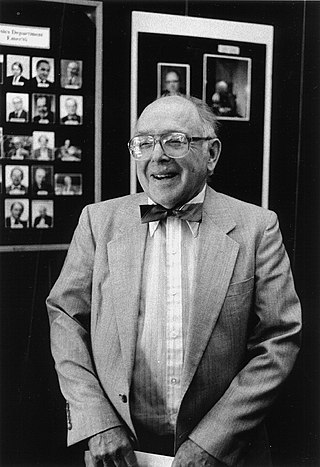
Clifford Glenwood Shull was an American physicist.
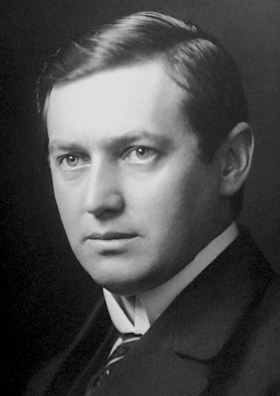
Karl Manne Georg Siegbahn FRS(For) HFRSE was a Swedish physicist who was awarded the Nobel Prize in Physics in 1924 "for his discoveries and research in the field of X-ray spectroscopy".

The Fannie and John Hertz Foundation is an American non-profit organization that awards fellowships to Ph.D. students in the applied physical, biological and engineering sciences. The fellowship provides $250,000 of support over five years. The goal is for Fellows to be financially independent and free from traditional restrictions of their academic departments in order to promote innovation in collaboration with leading professors in the field. Through a rigorous application and interview process, the Hertz Foundation seeks to identify young scientists and engineers with the potential to change the world for the better and supports their research endeavors from an early stage. Fellowship recipients pledge to make their skills available to the United States in times of national emergency.

Sigvard Arne Eklund was Director General of the International Atomic Energy Agency from 1961 to 1981.
Achim Richter is a German nuclear physicist. He became a professor at the Institute of Nuclear Physics at the Darmstadt University of Technology in 1974 and retired in September 2008. From 1 November 2008 to 31 October 2012 he was director of the European Centre for Theoretical Studies in Nuclear Physics and Related Areas (ECT*) in Trento, Italy. Since 1 November 2012, he has been professor again at the Institute for Nuclear Physics of TU Darmstadt.
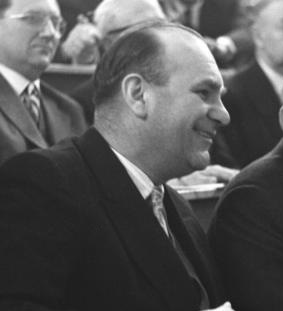
Heinz Barwich was a German nuclear physicist. He was deputy director of the Siemens Research Laboratory II in Berlin. At the close of World War II, he followed the decision of Gustav Hertz, to go to the Soviet Union for ten years to work on the Soviet atomic bomb project, for which he received the Stalin Prize. He was director of the Zentralinstitut für Kernforschung at Rossendorf near Dresden. For a few years he was director of the Joint Institute for Nuclear Research in Dubna, Soviet Union. In 1964 he defected to the West.
Karl Johan Åström is a Swedish control theorist, who has made contributions to the fields of control theory and control engineering, computer control and adaptive control. In 1965, he described a general framework of Markov decision processes with incomplete information, what ultimately led to the notion of a Partially observable Markov decision process.
Justus Mühlenpfordt was a German nuclear physicist. He received his doctorate from the Technische Hochschule Carolo-Wilhelmina zu Braunschweig, in 1936. He then worked in Gustav Hertz's laboratory at Siemens. In 1945, he was sent to Institute G, near Sukhumi and under the directorship of Hertz, to work on the Soviet atomic bomb project. Released from Soviet Union, Mühlenpfordt arrived in East Germany in 1955. He was appointed director of the Institut für physikalische Stofftrennung of the Academy of Sciences, in Leipzig. From 1969 until his retirement in 1974, Mühlenpfordt was director of the Forschungsbereiches Kern- und Isotopentechnik der Akademie.

The Department of Physics in Lund is a department that belongs to both the Faculty of Natural Sciences and the Faculty of Engineering at Lund University. The main goals are to expand the understanding of physics, its applications and to share scientific progress to new generations. Research is conducted in most of the physics subdivisions. The department also offers courses and a Masters's degree programs in pure physics and provides physics education for the Master of Science in Engineering programs.
Mats Hillert was a Swedish metallurgist who was an emeritus professor in metallography at the Royal Institute of Technology (KTH).
Stig Torsten Stenholm was a theoretical physicist who formerly held an Academy of Finland professorship.
Palle Rama Rao FREng is an Indian scientist noted for his contribution to the field of Physical and Mechanical Metallurgy. He has collaborated and conducted research activities for over dozen universities and associations all over India and abroad. He has been honoured with the titles of Padma Vibhushan in 2011 by president of India for his contributions to scientific community. He is acting as the chairman, Governing Council, International Advanced Research Centre for Powder Metallurgy & New Materials (ARCI), Hyderabad.
Torsten Karl Adolf Magnusson was a Swedish physicist and defense research scientists. Magnusson was Director-General of the Swedish National Defence Research Institute (FOA) from 1968 to 1974 and was one of the prominent figures of the Swedish nuclear weapons program.
Evert Ingolf Lindau is a Swedish physicist and professor emeritus at Lund University and Stanford University and a member of the Royal Swedish Academy of Sciences.

Vladilen Fyodorovich Minin is a Soviet and Russian physicist, Doctor of Technical Sciences, a professor, a member of the Academy of Technological Sciences of the Russian Federation. He was the founder, general director and chief designer of the Institute of Applied Physics (1966-1996), the founder and president of the Urals-Siberian Branch of Russian Academy of Technological Sciences. He developed air- and navy- launched missiles, custom control and safety systems and computer equipment.
Birgit Ann-Marie Margareta Nordbring-Hertz, was a Swedish scientist at Lund University known for her work on the interactions between fungi and nematodes.
References
- ↑ Singh, S; Goyal, A (2007). "The origin of echocardiography: a tribute to Inge Edler". Tex Heart Inst J. 34 (4): 431–8. PMC 2170493 . PMID 18172524.
- ↑ International book of honor. Raleigh, N.C., U.S.A.: American Biographical Institute. 1985. p. 280. ISBN 978-0-934544-24-5.
- ↑ Birgit Ann-Marie Margareta Nordbring-Hertz. OCLC 4779320164.
- ↑ Hertz, Hans M. (1988). Optical techniques for nonintrusive studies on combustion and high-voltage systems. Lund: Lund reports on atomic physics, 0281-2762; 88.
- ↑ "Max IV kraftigt försenat". Universitetsläraren. Retrieved 24 May 2019.
- ↑ IVAs Matrikel 2012. Kungl. Ingenjörsvetenskapsakademien. 2012. p. 166. ISBN 978-91-7082-844-7.
- ↑ "Största framsteget för röntgenkällor på 90 år". Polhemspriset (in Swedish). Retrieved 2022-02-11.
- ↑ "De kan få finaste teknikpriset". NyTeknik (in Swedish). Retrieved 2022-02-11.